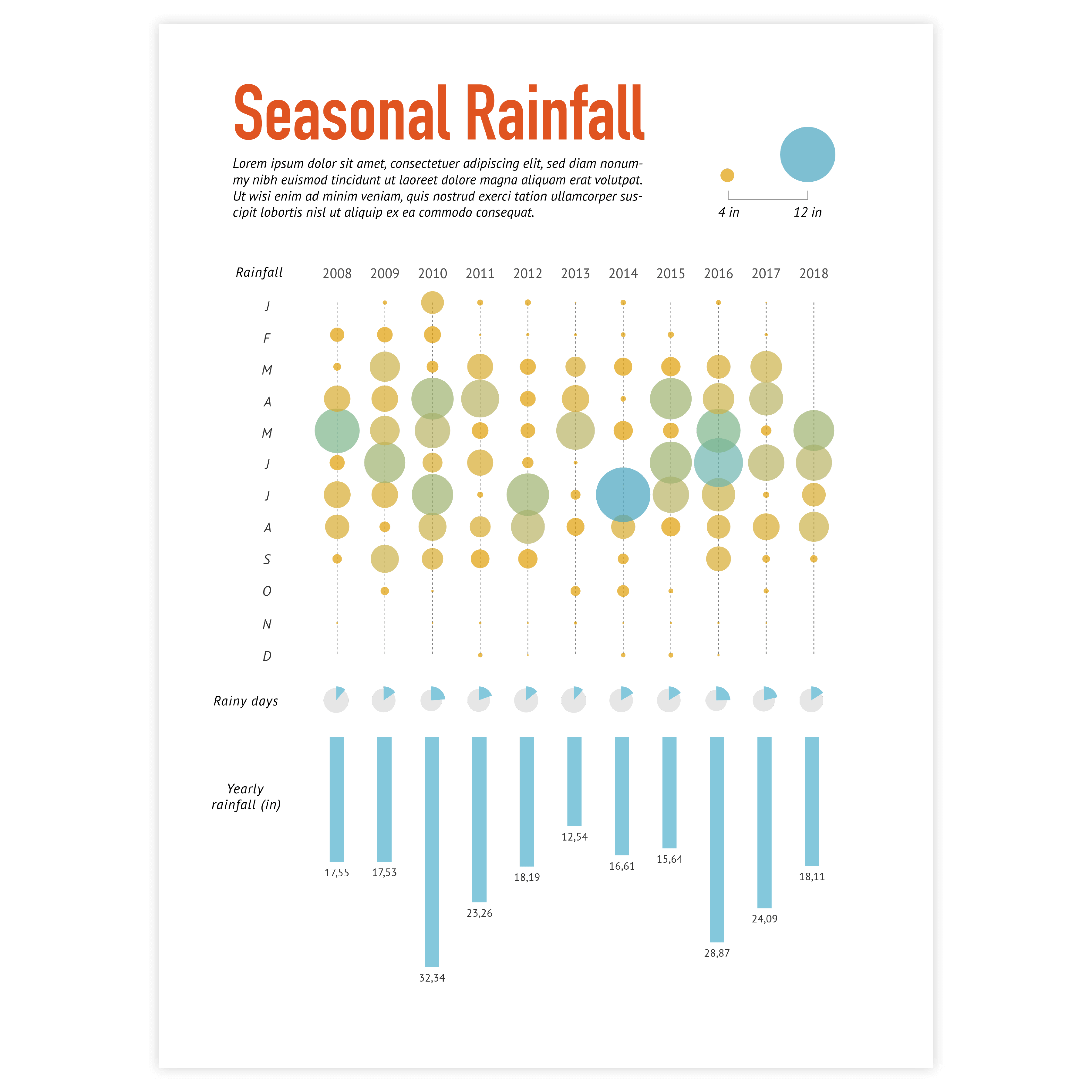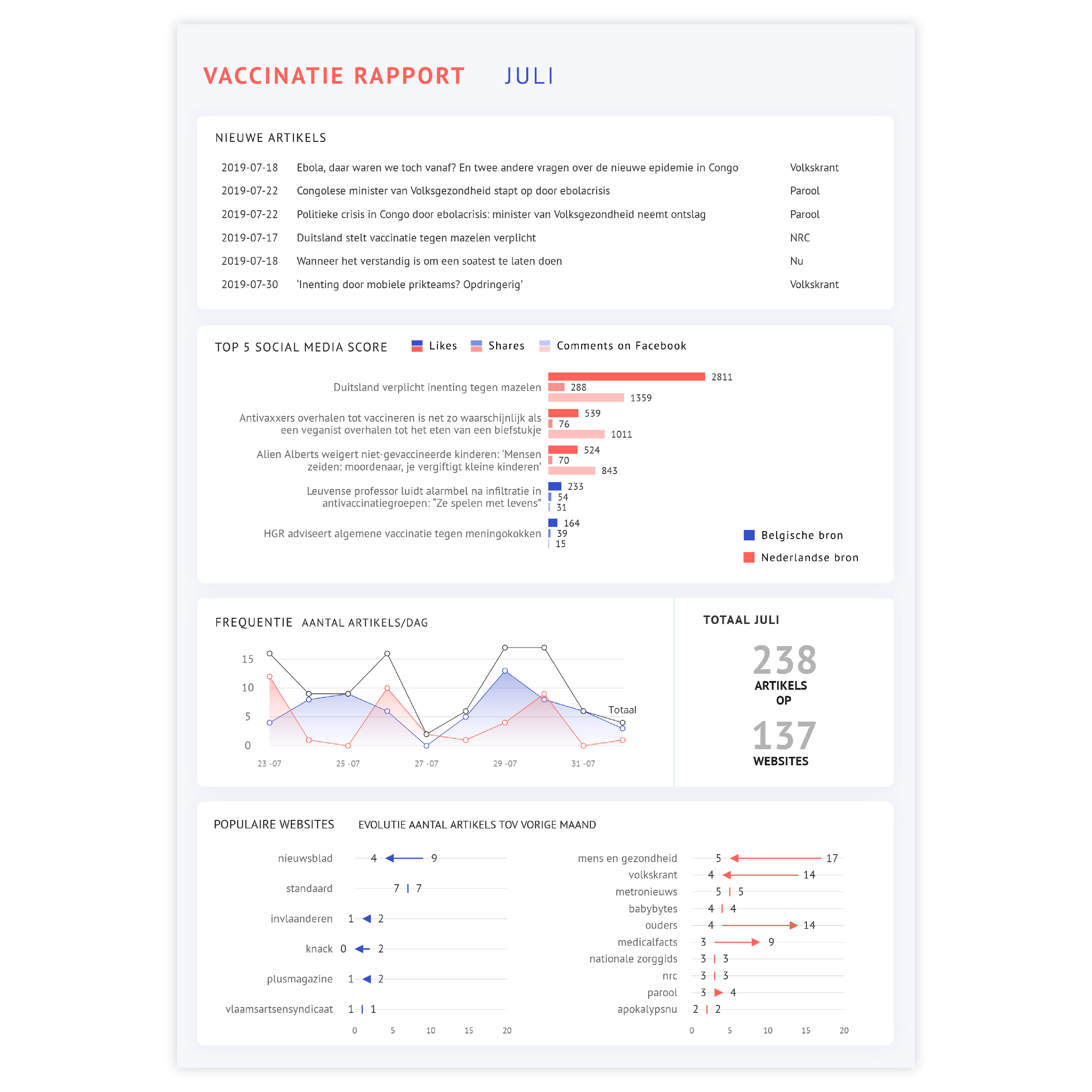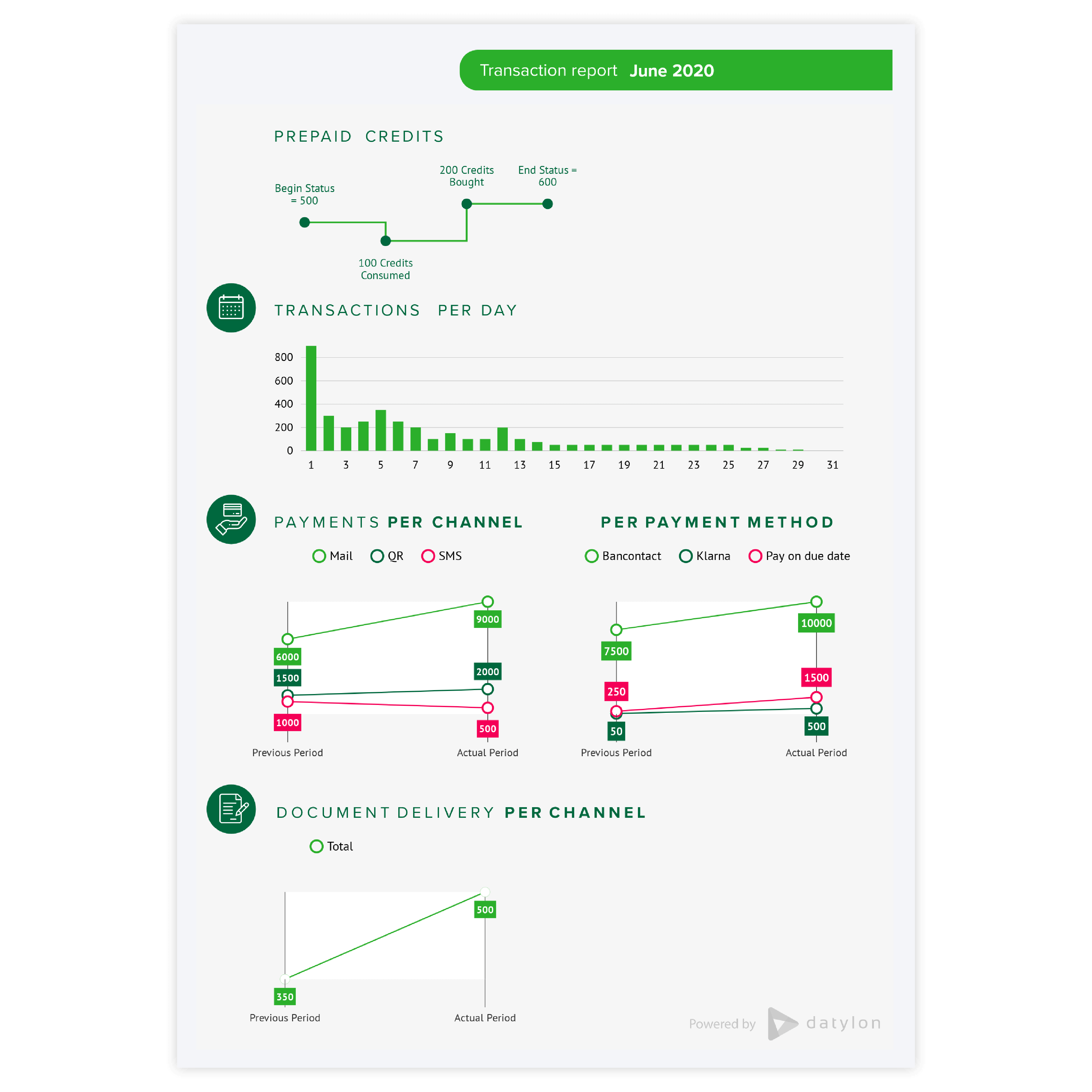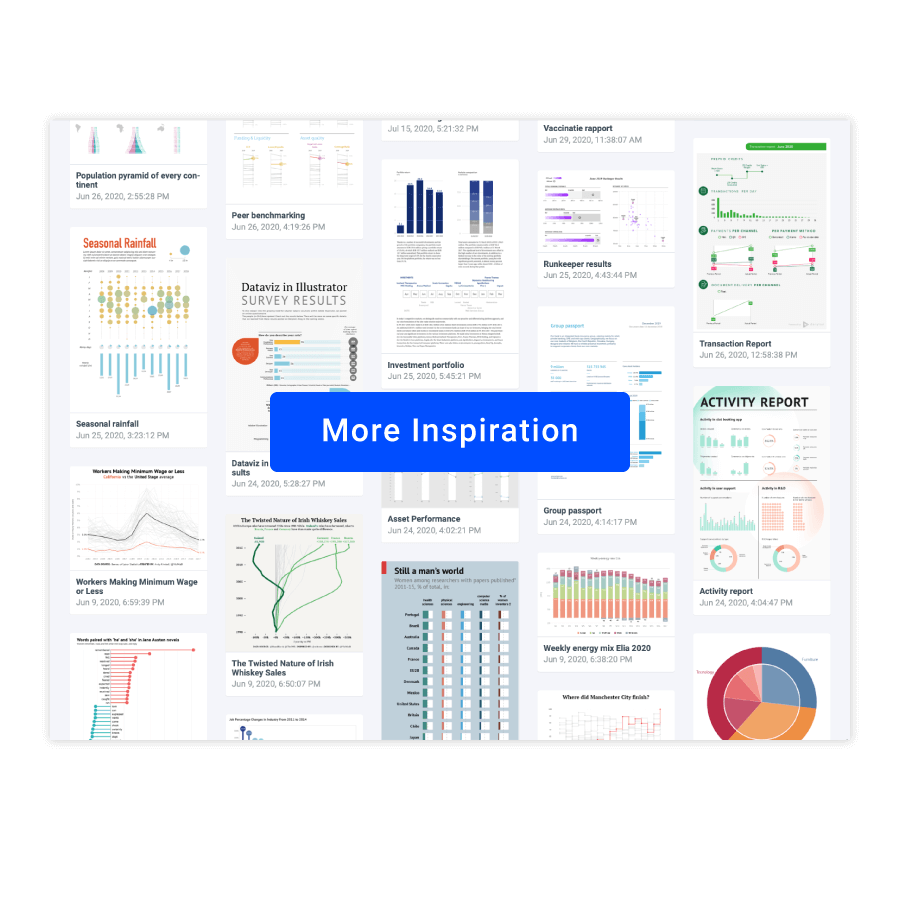Column chart

DATYLON > CHART LIBRARY > COLUMN CHART
What is a column chart?
The difference between a column chart and a bar chart is in the usage of labels. Bar charts can handle long categorical labels, while column charts work better with short labels or time series.
Column charts are better than bar charts for cases when categories have a natural order, like income levels or education levels. Column charts are very easy to read and are easily recognised by the general public.
Column chart examples & inspiration
Scroll and click on the images below to find inspiration samples of column charts. With your Datylon account, you can use these designs, customize them and update them with new data.
Variations of column charts
The charts below are variations of a column chart. To learn how to make them with Datylon, check out the bar chart user documentation in the Datylon Help Center.
Alternatives to a column chart
Substitute your column chart with any of the charts below when you want a visual alternative that still allows you to compare values within and between categories.
Pro tips for designing a column chart
Learn how to improve the readability and visual appeal of your column chart.
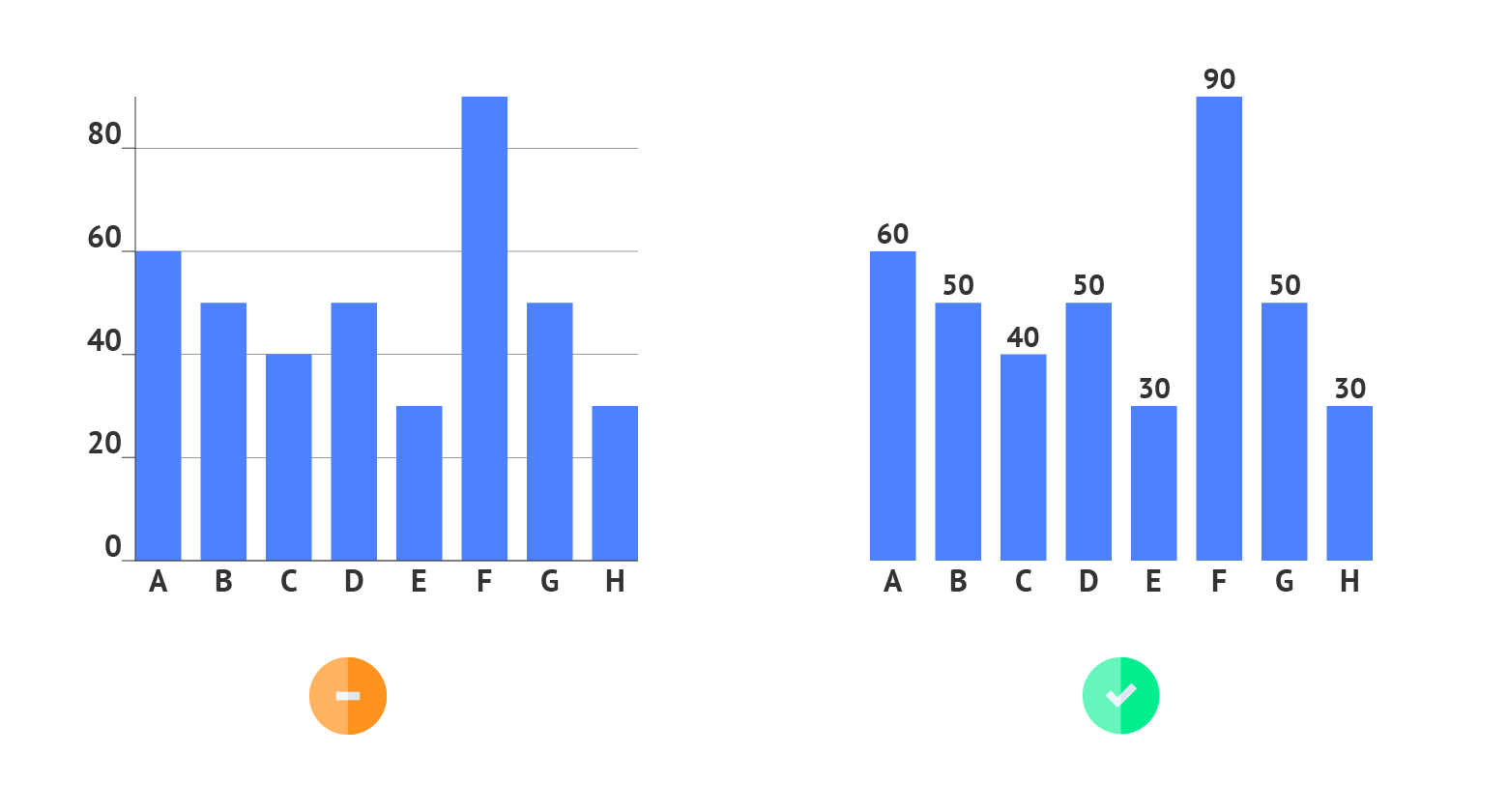
Labeling
The rule of thumb for using labels in column charts is to use data labels instead of axis labels and axes themselves. By using only data labels the visual clutter is reduced and the essential information is provided.
Read more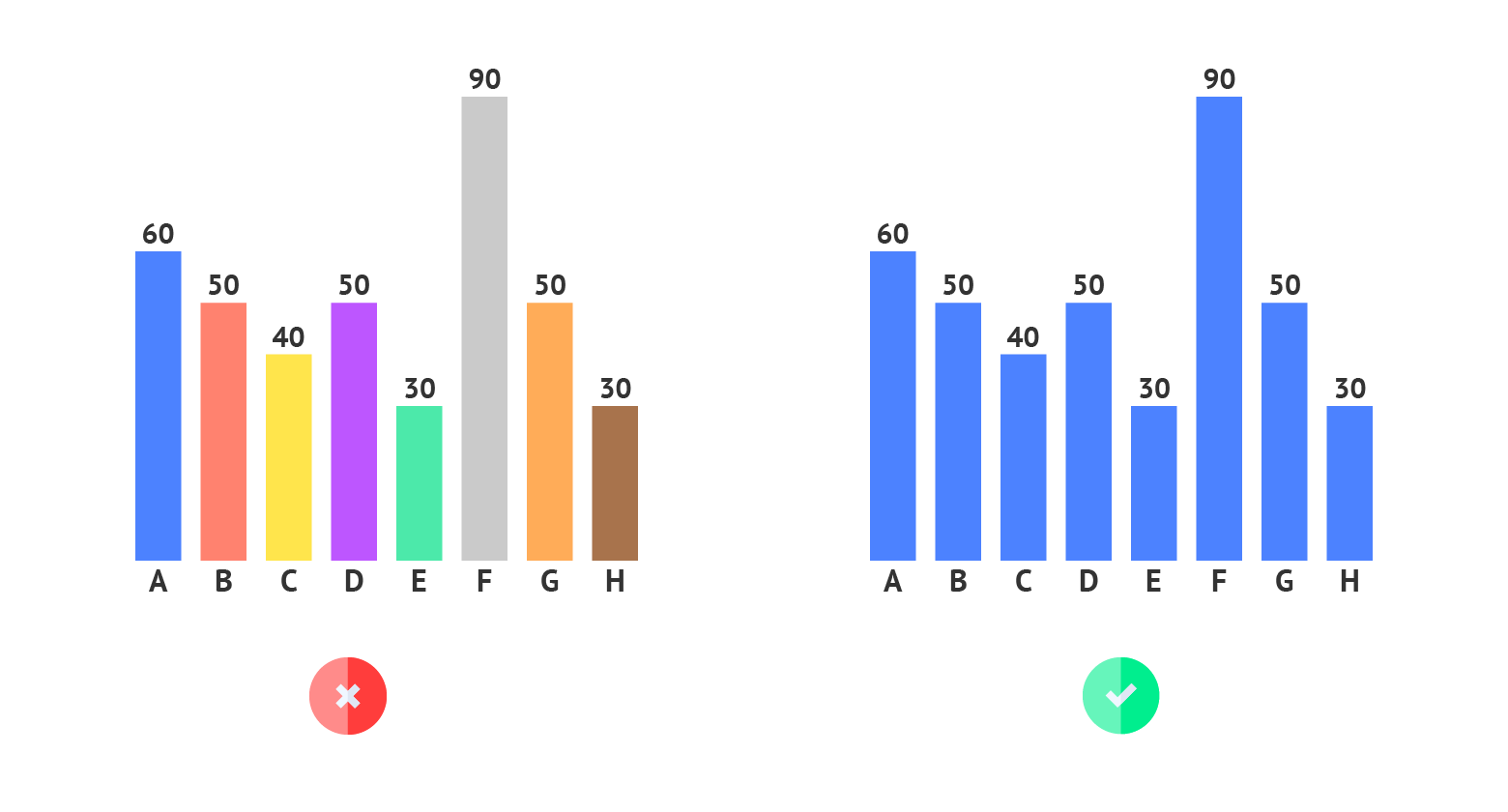
Coloring
Coloring of column charts follows the general rule of using color in data visualization – use color only if it communicates additional information. For any basic column chart, one color should be enough. Don’t use a new color for every column chart just to make it beautiful. It will just make a column chart harder to read.
Read more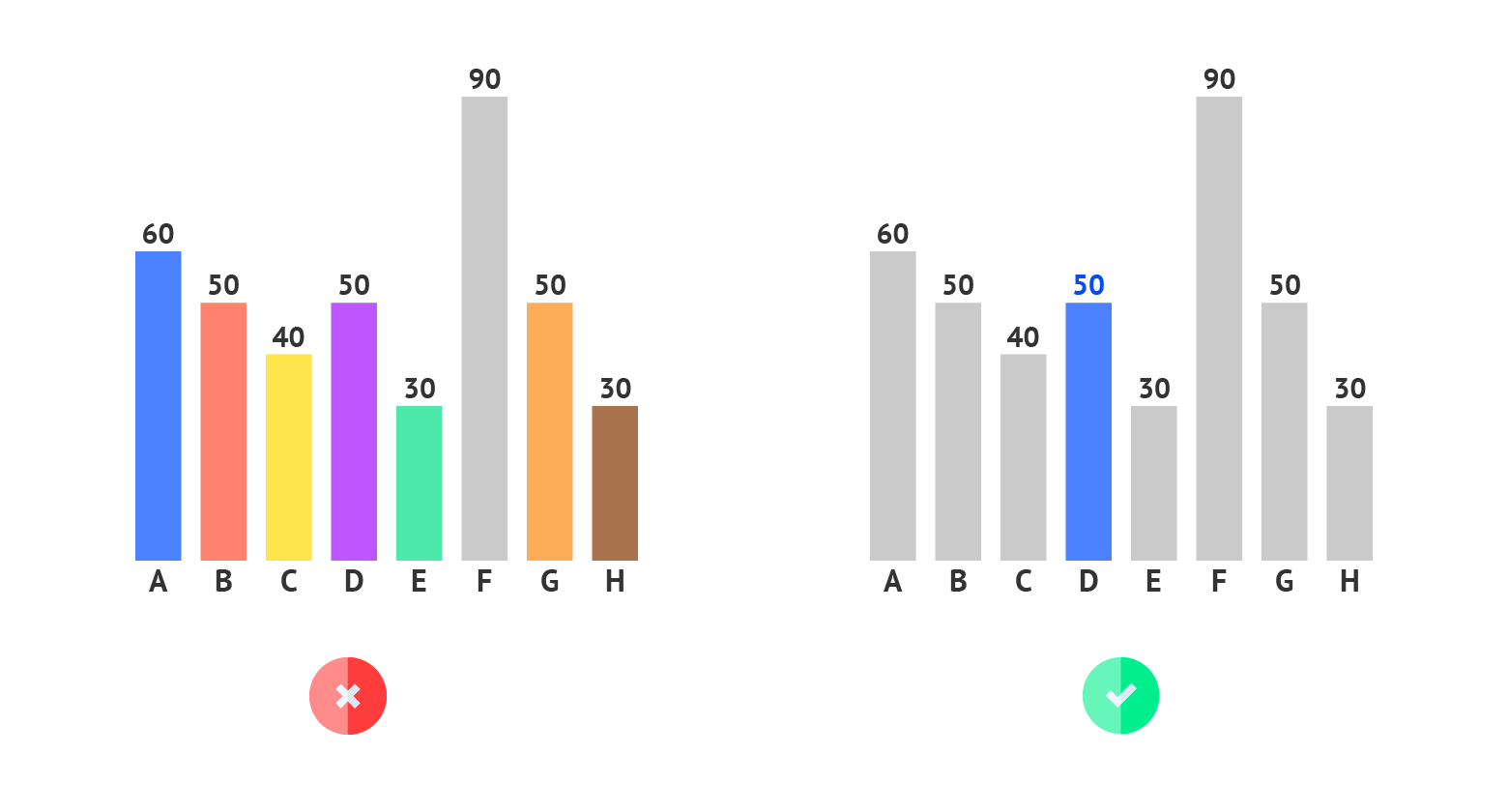
Highlighting
To draw attention to the most important categories of the column chart, a good solution is to highlight these columns and color all the other columns the same way in a neutral color. Our brain is programmed to notice deviations instantly. This can be done, for example, by applying changes in size, movement, or color. This way, highlighting a specific column will help catch the reader’s eye immediately.
Read more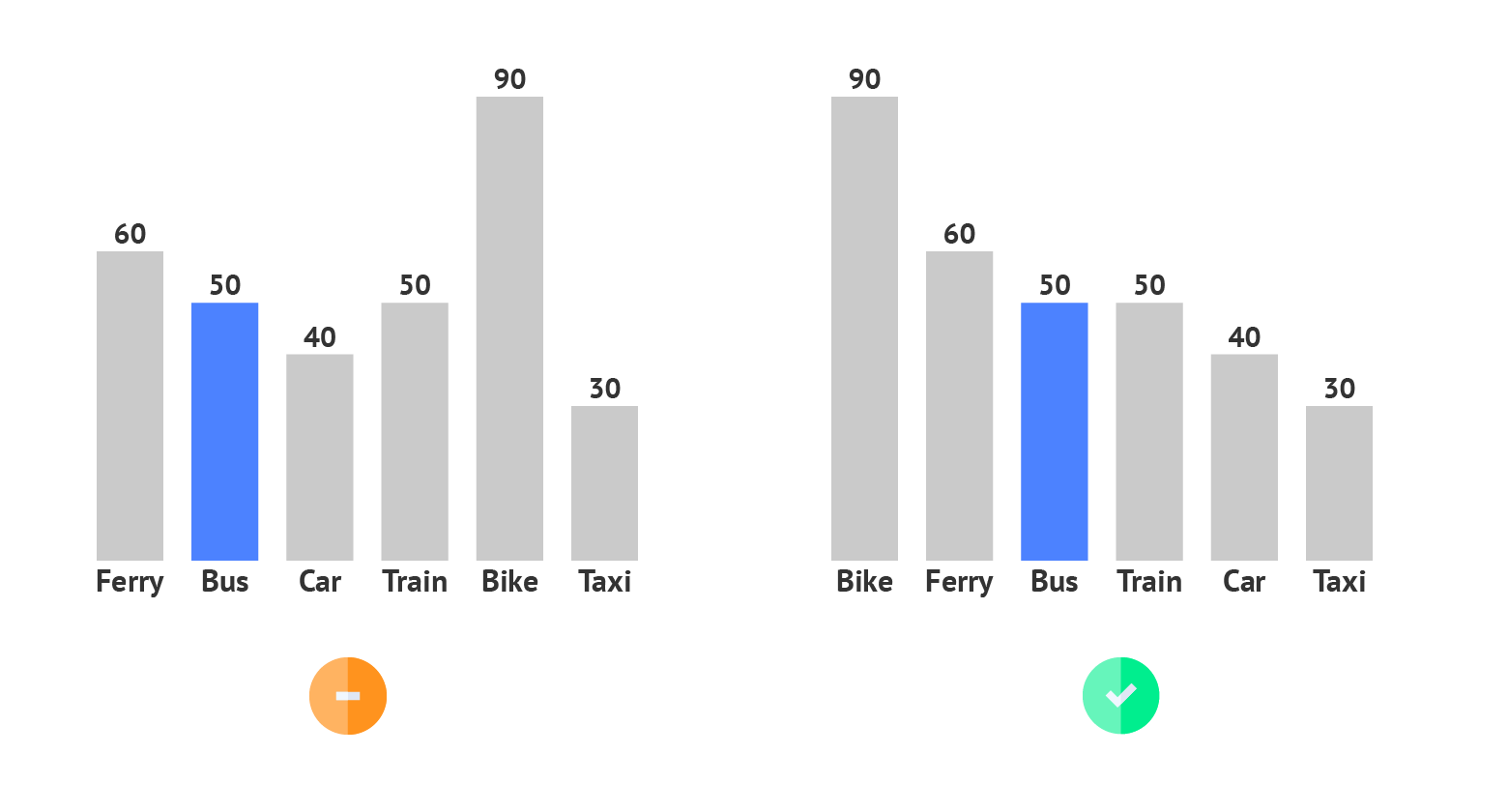
Sorting
Using ascending or descending sorting puts the column in order and helps the user to read the chart. It also reduces the time needed to compare the differences between different columns.
Read more
Overlaying columns
While grouped column charts can be useful for comparing two instances of the same order, overlaying columns can spot the slightest difference between two groups of values, for example between the actual and the target value.
Read more
